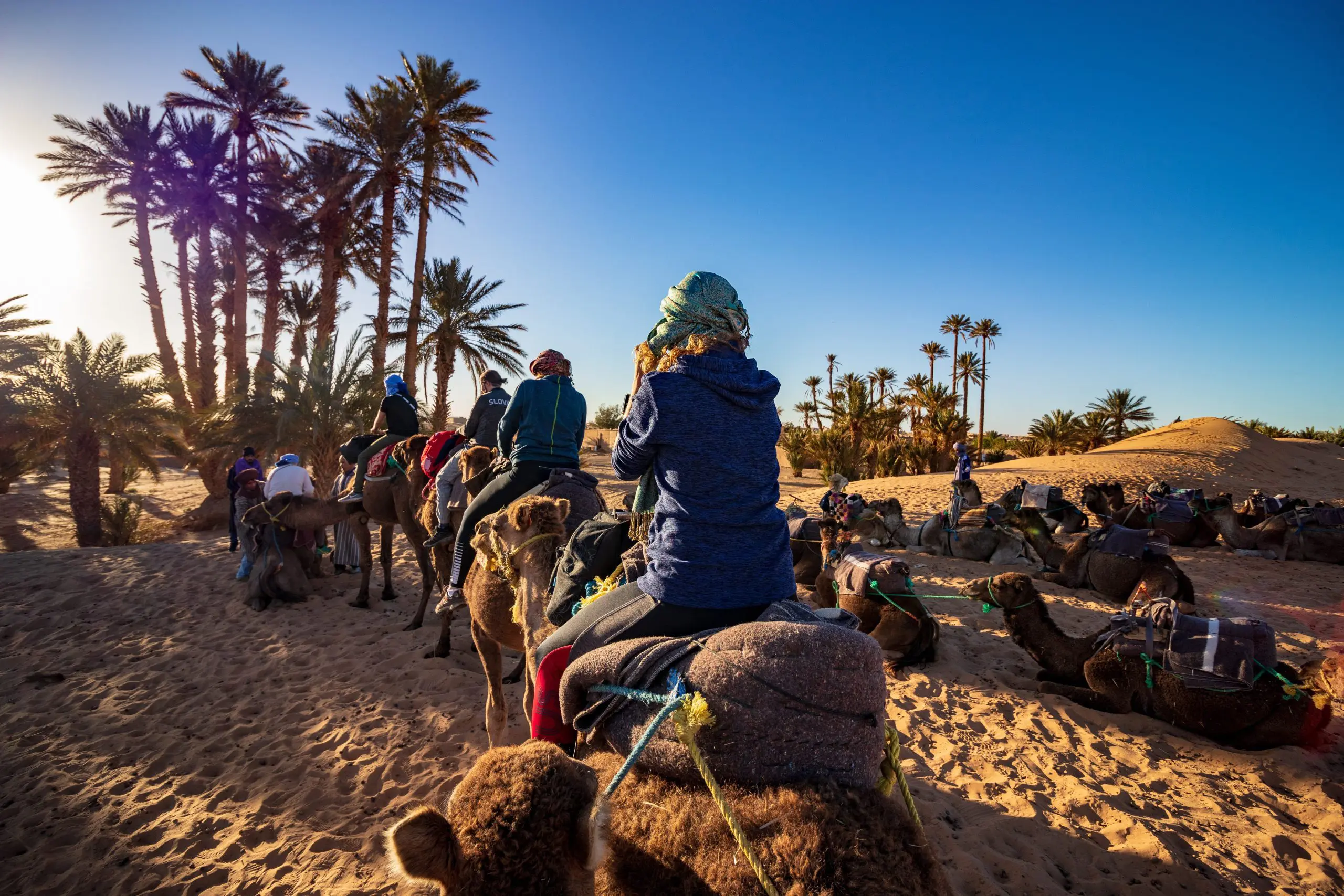Estimated reading time: 9 minutes
India, a land of vibrant cultures and diverse traditions, offers a culinary journey that is as varied and rich as its heritage. The foods of India are a reflection of its complex history, regional diversity, and the sheer passion that its people have for flavor. As a traveler, experiencing Indian cuisine in its most authentic form can be both a rewarding and unforgettable adventure.
I will guide you through excellent ways in which immersing yourself in the rich flavors and foods of India.
1. Indian Street Food Adventures

To truly understand the foods of India, one must start with its street food. From the bustling streets of Mumbai to the vibrant markets of Delhi, street food is an integral part of Indian culinary culture.
Here, you can savor dishes like Pani Puri, a tangy, spicy snack, or Vada Pav, Mumbai’s answer to the burger. These Indian dishes are prepared fresh and are packed with flavors that define the essence of the local cuisine.
Tips:
- Look for stalls that are popular with locals to ensure freshness and hygiene.
- Don’t shy away from asking for the level of spiciness that suits your palate.
- Try a variety of snacks to get a full taste of what the streets have to offer.
A lesser-known side of Indian street food is the variety of regional drinks and desserts that accompany the savory snacks. While many are familiar with popular items like chai (tea) and jalebi (sweet, deep-fried spirals), there are numerous unique beverages and sweets.
Regional Drinks in India You Must Try:
- Masala Chaas (Spiced Buttermilk): Common in Gujarat and Maharashtra, masala chaas is a refreshing, savory yogurt-based drink spiced with cumin, mint, coriander, and green chilies.
- Lassi: While sweet lassi from Punjab is well-known, the savory versions are less celebrated.
2. Regional Specialties

The foods of India vary significantly from one region to another. For instance, the cuisine in the southern states like Kerala and Tamil Nadu is predominantly rice-based with a lot of coconut, while northern Indian dishes, especially from Punjab and Rajasthan, often revolve around wheat, dairy, and rich gravies.
Must-Try Regional Dishes:
- Hyderabadi Biryani: A fragrant rice dish layered with spiced meat, famous in the city of Hyderabad.
- Masala Dosa: A crispy crepe filled with spicy potato filling, popular in Karnataka.
- Rogan Josh: A flavorful lamb curry from Kashmir.
Personally, I resonate with Hyderabadi Biryani the most. The layering of rice, marinated meat (often chicken or mutton), and a rich blend of spices are both robust and subtle. Also, I was fascinated by the history of this dish told by the local people.
The traditional cooking method, known as Dum Pukht, involves slow-cooking the biryani in a sealed pot, allowing the flavors to meld together beautifully.
3. Home-Cooked Meals

For an authentic experience, try to arrange a meal with a local family. Home-cooked Indian dishes provide insight into the traditional cooking methods and the warmth of Indian hospitality. Platforms like EatWith and Traveling Spoon connect travelers with locals who are willing to share their meals and culinary traditions.
Benefits:
- Experience the true taste of Indian cuisine, often missed in restaurants.
- Learn about the ingredients and recipes directly from the home cook.
- Enjoy the communal aspect of dining that is so central to Indian culture.
4. Culinary Tours and Cooking Classes
Joining a culinary tour or taking a cooking class can enhance your understanding of the foods of India. Many cities offer tours that take you to markets, spice shops, and street food vendors, providing a comprehensive view of local food culture.
Recommendations:
- Jaipur Cooking Classes: Learn to prepare traditional Rajasthani dishes.
- Spice Market Tour in Delhi: Discover the myriad spices that form the backbone of Indian cooking.
- Kerala Backwater Cooking Class: Experience cooking with fresh ingredients in a serene setting.

Spice Plantation Tours in Kerala:
- Kerala is known as the land of spices, and visiting a spice plantation offers a unique opportunity to see, smell, and taste spices in their natural environment. Tours often include a walk through lush plantations where you can see black pepper, cardamom, cinnamon, and vanilla growing, along with a demonstration of how these spices are harvested and processed.
Old Delhi Food Walks:
- Old Delhi is a treasure trove of culinary delights, and a food walk through its narrow lanes can be an unforgettable experience. These tours often include stops at historic eateries that have been serving traditional dishes for generations.
- Expect to sample delicacies like Daulat ki Chaat, Nihari, and Chandni Chowk’s famous Parathas.
Ayurvedic Cooking Classes in Kerala:
- Kerala is not only famous for its spices but also for its Ayurvedic traditions. Some cooking classes in Kerala focus on Ayurvedic cuisine, which emphasizes balance and health.
- You’ll learn about the principles of Ayurveda and how to cook meals that are not only delicious but also nourishing for the body.
5. Festivals and Food Fairs

India’s festivals are a fantastic way to explore a variety of Indian dishes. Each festival brings with it a unique set of foods that are specially prepared for the occasion. Visiting during festivals like Diwali, Holi, or Durga Puja allows you to indulge in sweets, savories, and special regional dishes.
Notable Festival Foods:
- Modak during Ganesh Chaturthi: A sweet dumpling filled with coconut and jaggery.
- Gujiya during Holi: A sweet pastry filled with a mixture of khoya and dried fruits.
- Puran Poli during Diwali: A sweet flatbread stuffed with lentils and jaggery.
6. Iconic Restaurants and Eateries

No exploration of Indian cuisine is complete without dining at some of its iconic restaurants. These places have perfected the art of serving authentic Indian dishes that capture the essence of traditional recipes while often adding their own unique twist.
Historic Restaurants in India
- Karim’s in Delhi:
- Established in 1913 near the Jama Masjid, Karim’s is famous for its Mughlai cuisine. Try the Mutton Korma and Badam Pasanda. Arrive early or during off-peak hours to avoid long wait times. For a full experience, combine your visit with a walking tour of Old Delhi.
- Leopold Cafe in Mumbai:
- A popular haunt for both locals and tourists since 1871, Leopold Cafe is known for its Indo-European menu and vibrant atmosphere. Try their Chicken Pot Rice and Beef Chilli Fry. The cafe also has an intriguing history, including its resilience after the 2008 attacks.
Specialty Eateries in India
- Mavalli Tiffin Room (MTR) in Bangalore:
- MTR, founded in 1924, is the go-to place for authentic South Indian breakfast. Their Rava Idli and Bisi Bele Bath are must-tries. The restaurant maintains strict hygiene standards, and you can even buy their ready-to-cook mixes to take home.
- Bukhara in New Delhi:
- Located in ITC Maurya, Bukhara is celebrated for its North-West Frontier cuisine. The Dal Bukhara and Sikandari Raan are legendary. Booking a table in advance is highly recommended, and dining here can be an opportunity to spot celebrities and diplomats.

Unique Dining Experiences in India
- Saravana Bhavan in Chennai:
- Famous for its vegetarian South Indian fare, Saravana Bhavan is an international chain with humble beginnings in Chennai. Their Mini Tiffin platter offers a variety of tastes. Early morning visits ensure you get the freshest preparations.
- Thalassa in Goa:
- Perched on a cliff in Vagator, Thalassa offers stunning views of the Arabian Sea alongside delicious Greek cuisine. The Moussaka and Souvlaki are crowd favorites. Arrive before sunset to enjoy the view and stay for the lively evening atmosphere with music and dance.
FAQ About the Foods of India
India does not have an officially declared national food, but Khichdi, a dish made from rice and lentils, is often considered a strong contender due to its simplicity, nutritional value, and widespread popularity across the country.
The most ordered food in India varies by region, but Biryani is consistently one of the most popular dishes nationwide, loved for its flavorful rice and meat or vegetable combinations.
People in India traditionally eat with their right hand, using their fingers to mix and scoop food. It’s common to use chapati (flatbread) or rice as a base to pick up curries and vegetables. Eating with the hands is considered to enhance the sensory experience of the meal.
Hygiene: Choose restaurants and street food vendors that appear clean and busy.
Spice Levels: Indian food can be very spicy, so specify your preference.
Water Safety: Drink bottled or filtered water to avoid waterborne illnesses.
Local Recommendations: Ask locals for dining suggestions to find the best and safest spots.
Finish Your Plate: Wasting food is frowned upon.
Right Hand: Eat and pass food with your right hand.
Offer Prayers: Many people say a short prayer before meals to show gratitude.
Respect Dietary Restrictions: Be mindful of vegetarianism and other dietary practices prevalent in India.
 December Sale; Save 50%
December Sale; Save 50%  Croatia Sailing : Save 50%
Croatia Sailing : Save 50% Asia Tours : 50% Off
Asia Tours : 50% Off Central & Eastern Europe Tours: 50% Off
Central & Eastern Europe Tours: 50% Off  Why Travel Talk
Why Travel Talk Travel Talk Blog
Travel Talk Blog Responsible Travel
Responsible Travel Fair Travels with Travel Talk
Fair Travels with Travel Talk